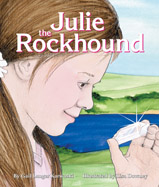Alignment to Standards for CA

| Grade | Number | Standard |
|---|---|---|
| 2 | 2 S ES--3 | Earth is made of materials that have distinct properties and provide resources for human activities. |
| 2 | 2 S ES--3.a. | compare the physical properties of different kinds of rocks and know that rock is composed of different combinations of minerals. |
| 2 | 2 S ES--3.b. | smaller rocks come from the breakage and weathering of larger rocks. |
| 2 | 2 S ES--3.e.D144 | rocks, water, plants, and soil provide many resources, including food, fuel, and building materials, that humans use. |
| 2 | 2 S I&E--4.c. | Compare and sort common objects according to two or more physical attributes (e.g., color, shape, texture, size, weight). |
| 4 | 4 S ES--4 | The properties of rocks and minerals reflect the processes that formed them. |
| 4 | 4 S ES--4.a. | differentiate among igneous, sedimentary, and metamorphic rocks by referring to their properties and methods of formation (the rock cycle). |
| 4 | 4 S ES--4.b. | identify common rock-forming minerals (including quartz, calcite, feldspar, mica, and hornblende) and ore minerals by using a table of diagnostic properties. |
| 5 | 5 S I&E--6.a. | Classify objects (e.g., rocks, plants, leaves) in accordance with appropriate criteria. |
| K | K S ES--3.c. | Students identify resources from Earth that are used in everyday life and understand that many resources can be conserved. |
| K | K S I&E--4.a. | Observe common objects by using the five senses. |
| K | K S I&E--4.b. | Describe the properties of common objects. |
| K | K S I&E--4.d. | Compare and sort common objects by one physical attribute (e.g., color, shape, texture, size, weight). |
| K | K S PS--1 | Properties of materials can be observed, measured, and predicted. |
| K | K S PS--1.a. | objects sorted by the materials they are made of and their physical properties (e.g., color, size, shape, weight, texture, flexibility, attraction to magnets, floating, sinking). |